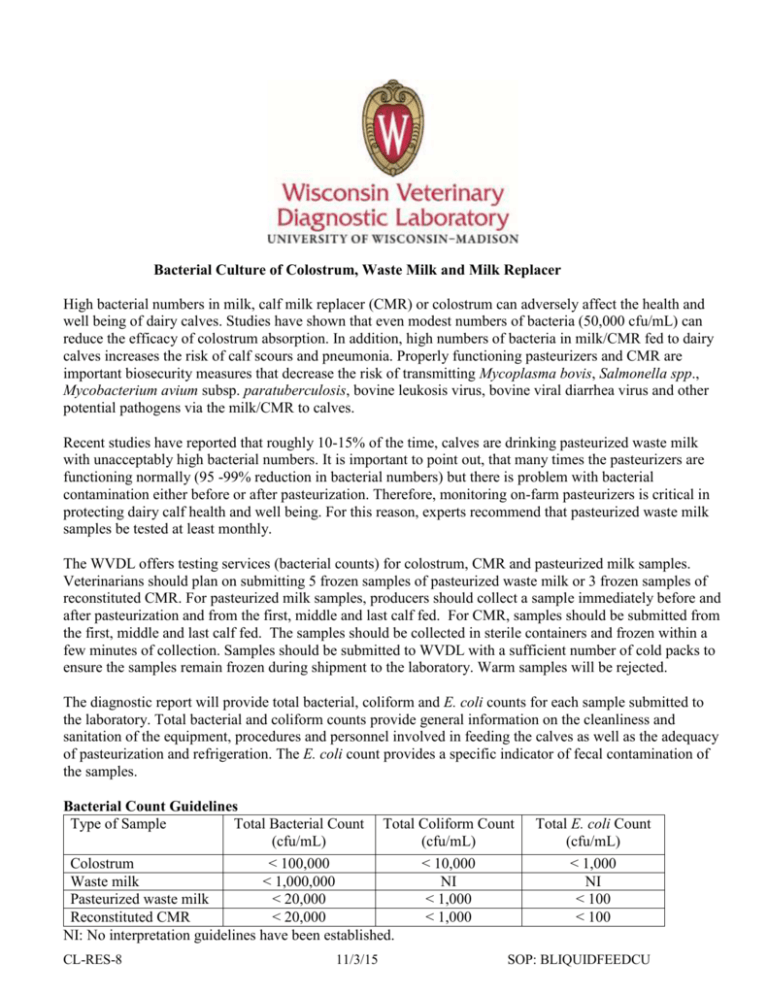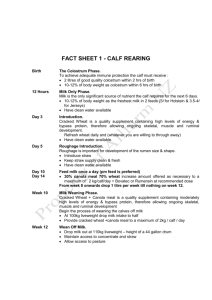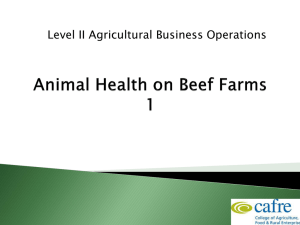Colostrum, Waste Milk and Milk Replacer Bacterial Culture
advertisement

Bacterial Culture of Colostrum, Waste Milk and Milk Replacer High bacterial numbers in milk, calf milk replacer (CMR) or colostrum can adversely affect the health and well being of dairy calves. Studies have shown that even modest numbers of bacteria (50,000 cfu/mL) can reduce the efficacy of colostrum absorption. In addition, high numbers of bacteria in milk/CMR fed to dairy calves increases the risk of calf scours and pneumonia. Properly functioning pasteurizers and CMR are important biosecurity measures that decrease the risk of transmitting Mycoplasma bovis, Salmonella spp., Mycobacterium avium subsp. paratuberculosis, bovine leukosis virus, bovine viral diarrhea virus and other potential pathogens via the milk/CMR to calves. Recent studies have reported that roughly 10-15% of the time, calves are drinking pasteurized waste milk with unacceptably high bacterial numbers. It is important to point out, that many times the pasteurizers are functioning normally (95 -99% reduction in bacterial numbers) but there is problem with bacterial contamination either before or after pasteurization. Therefore, monitoring on-farm pasteurizers is critical in protecting dairy calf health and well being. For this reason, experts recommend that pasteurized waste milk samples be tested at least monthly. The WVDL offers testing services (bacterial counts) for colostrum, CMR and pasteurized milk samples. Veterinarians should plan on submitting 5 frozen samples of pasteurized waste milk or 3 frozen samples of reconstituted CMR. For pasteurized milk samples, producers should collect a sample immediately before and after pasteurization and from the first, middle and last calf fed. For CMR, samples should be submitted from the first, middle and last calf fed. The samples should be collected in sterile containers and frozen within a few minutes of collection. Samples should be submitted to WVDL with a sufficient number of cold packs to ensure the samples remain frozen during shipment to the laboratory. Warm samples will be rejected. The diagnostic report will provide total bacterial, coliform and E. coli counts for each sample submitted to the laboratory. Total bacterial and coliform counts provide general information on the cleanliness and sanitation of the equipment, procedures and personnel involved in feeding the calves as well as the adequacy of pasteurization and refrigeration. The E. coli count provides a specific indicator of fecal contamination of the samples. Bacterial Count Guidelines Type of Sample Total Bacterial Count Total Coliform Count (cfu/mL) (cfu/mL) Colostrum < 100,000 < 10,000 Waste milk < 1,000,000 NI Pasteurized waste milk < 20,000 < 1,000 Reconstituted CMR < 20,000 < 1,000 NI: No interpretation guidelines have been established. CL-RES-8 11/3/15 Total E. coli Count (cfu/mL) < 1,000 NI < 100 < 100 SOP: BLIQUIDFEEDCU






